Nourelhadi Awad paints short pieces of mundane life from an African community, where humans, animals and the environment live in natural harmony. His color and brushstrokes assemble as a perfect relationship and a fanciful abstractionism. The compositions contain successive stories, which unravel one inside the other, inciting a strong suggestive power. Cyclically, bodies insinuate forms, and shapes suggest bodies; a succession of stimuli that draws an atmosphere laden with feelings.
In Awad's painting, one observes a chameleon as being curious due to its paradoxical effect. On the one hand, it enhances people of vast dimensions who contain smaller ones; who can both be part of their garments or of their lives. On the other hand, as if by magic, the most prominent individuals lose their body opacity, becoming transparent; and, as simple stains, they now serve as a background for smaller people; in a labyrinthine and symbiotic relationship, almost paternalistic. The form and the background are intertwined, incessantly shifting their roles. It is a labyrinthine game with a simultaneous alternation between positive and negative space.
Additionally, Awad presents a rather odd spatial interpretation, accurately exploiting different concepts. His work swings between 2D representations, in which the figures and background have no dimension whatsoever. Also through 2.5D compositions, where the figures depicted by a simple plan overlap in depth in a 3D space. In other words, the three-dimensional figures appear in the space of equal dimensions.
Awad takes advantage of an endless color palette, mixed with an outstanding dexterity. Vibrant and luminous colors, glittering with the energy of the powerful African sun. Deep colors display a contrasting vivacity and are juxtaposed with absolute peacefulness and harmony.
His figurative representation is not motionless. Quite the opposite, it allows multiple approaches. We can hold ourselves to the most figurative description, or we can opt instead for a freer and abstract version; which benefits from the interaction with the viewer and unfurls their imagination.
By Pedro Boaventura • Excerpt from
Masters of Contemporary Fine Art - Volume 3


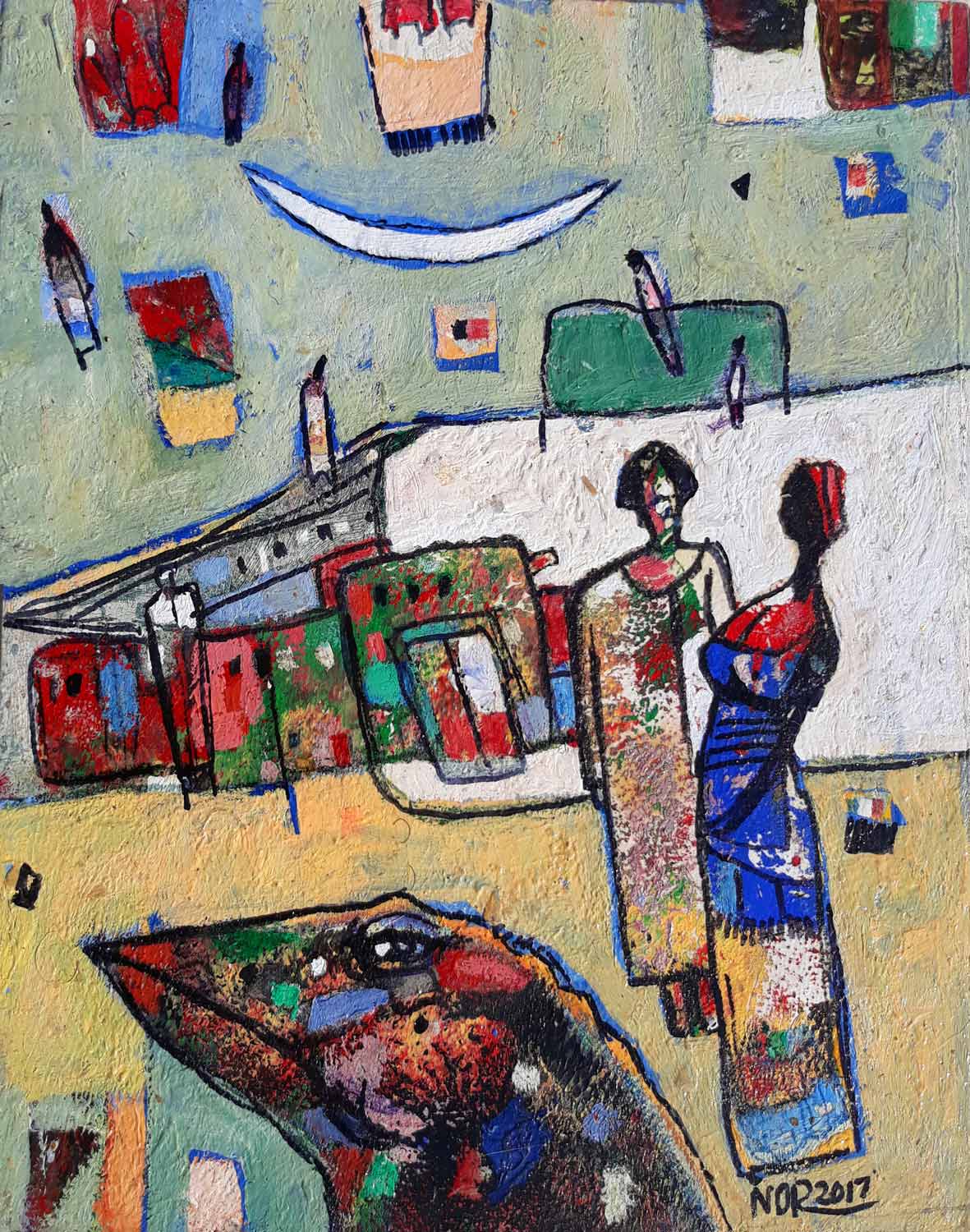
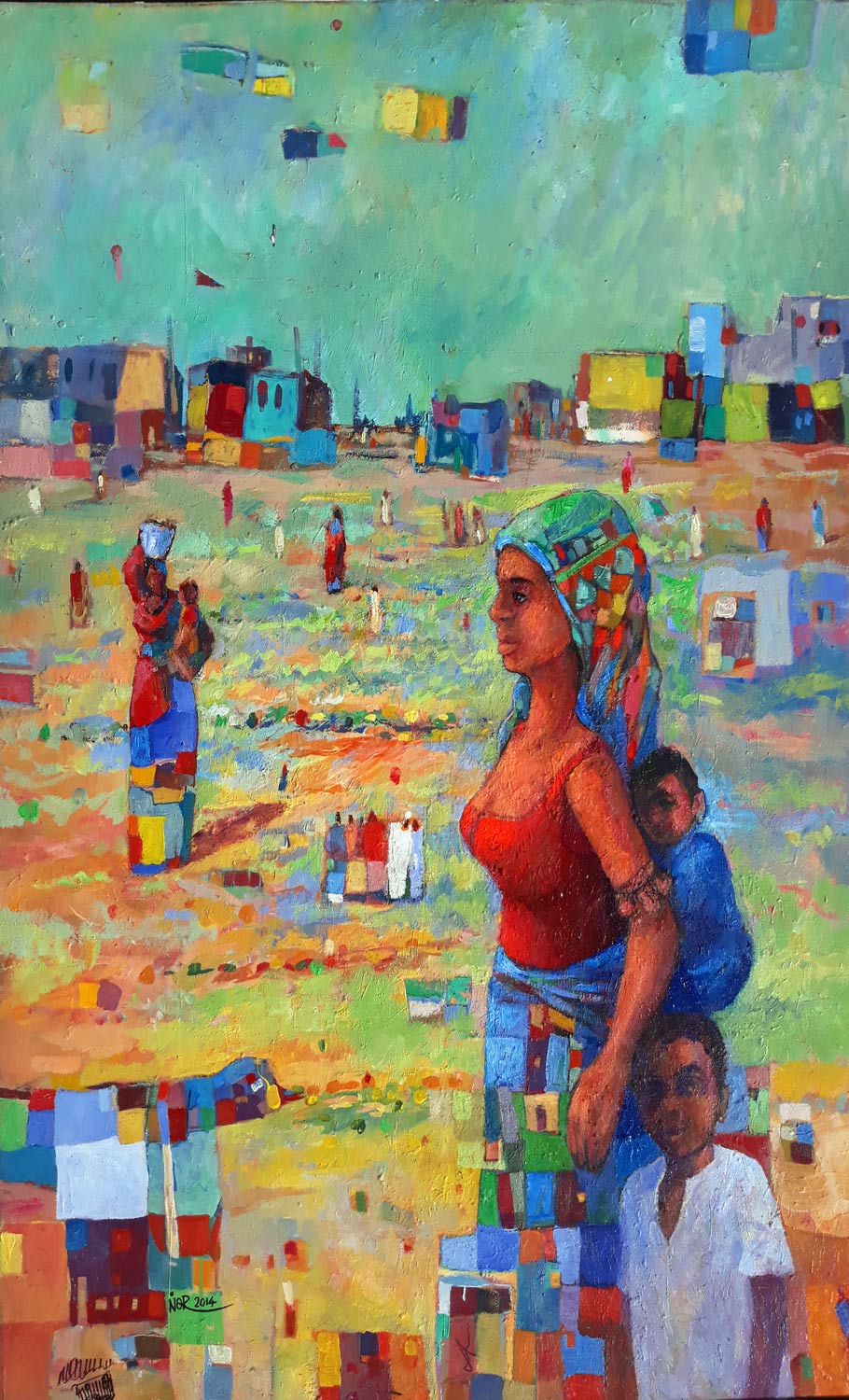



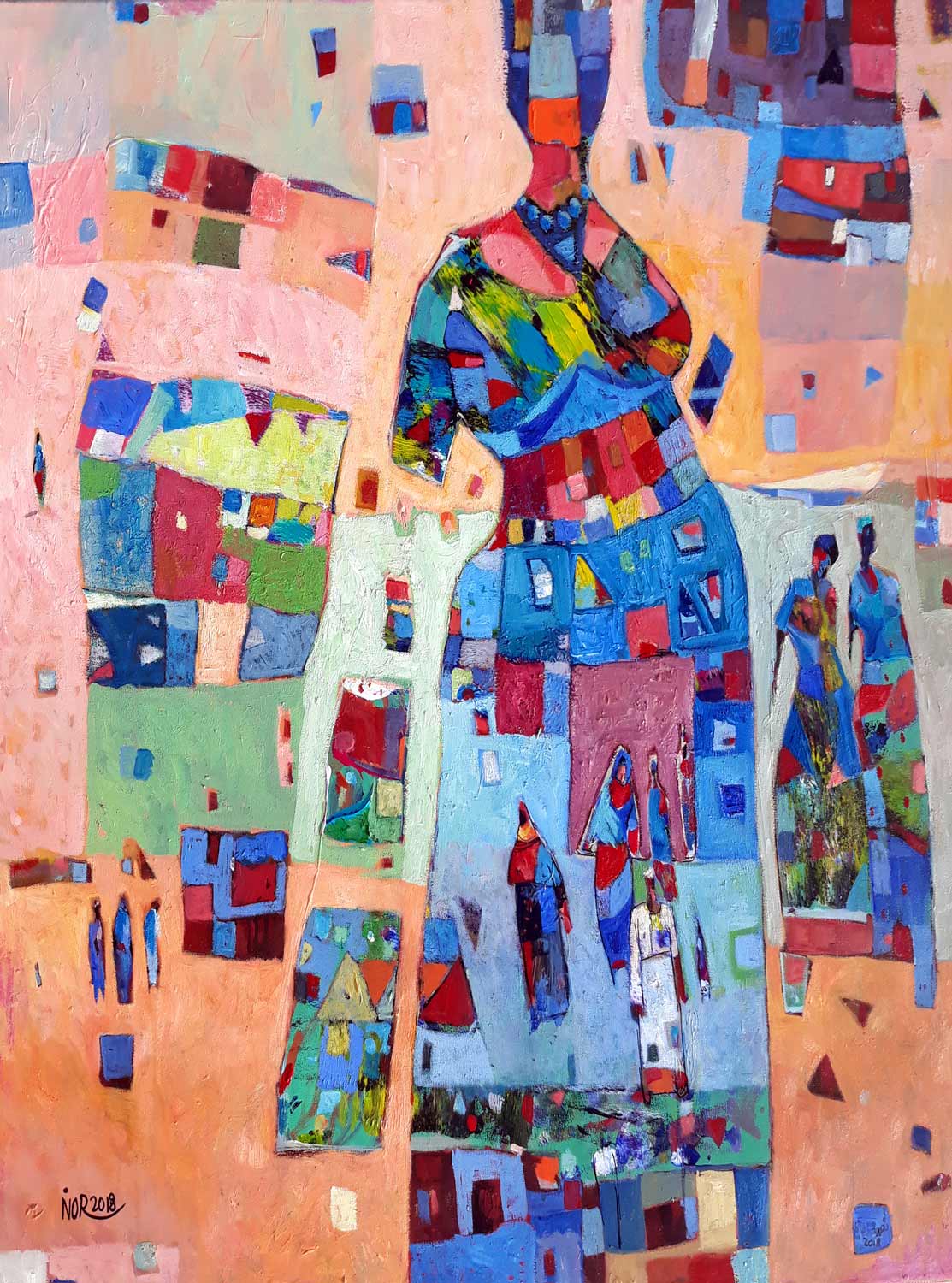
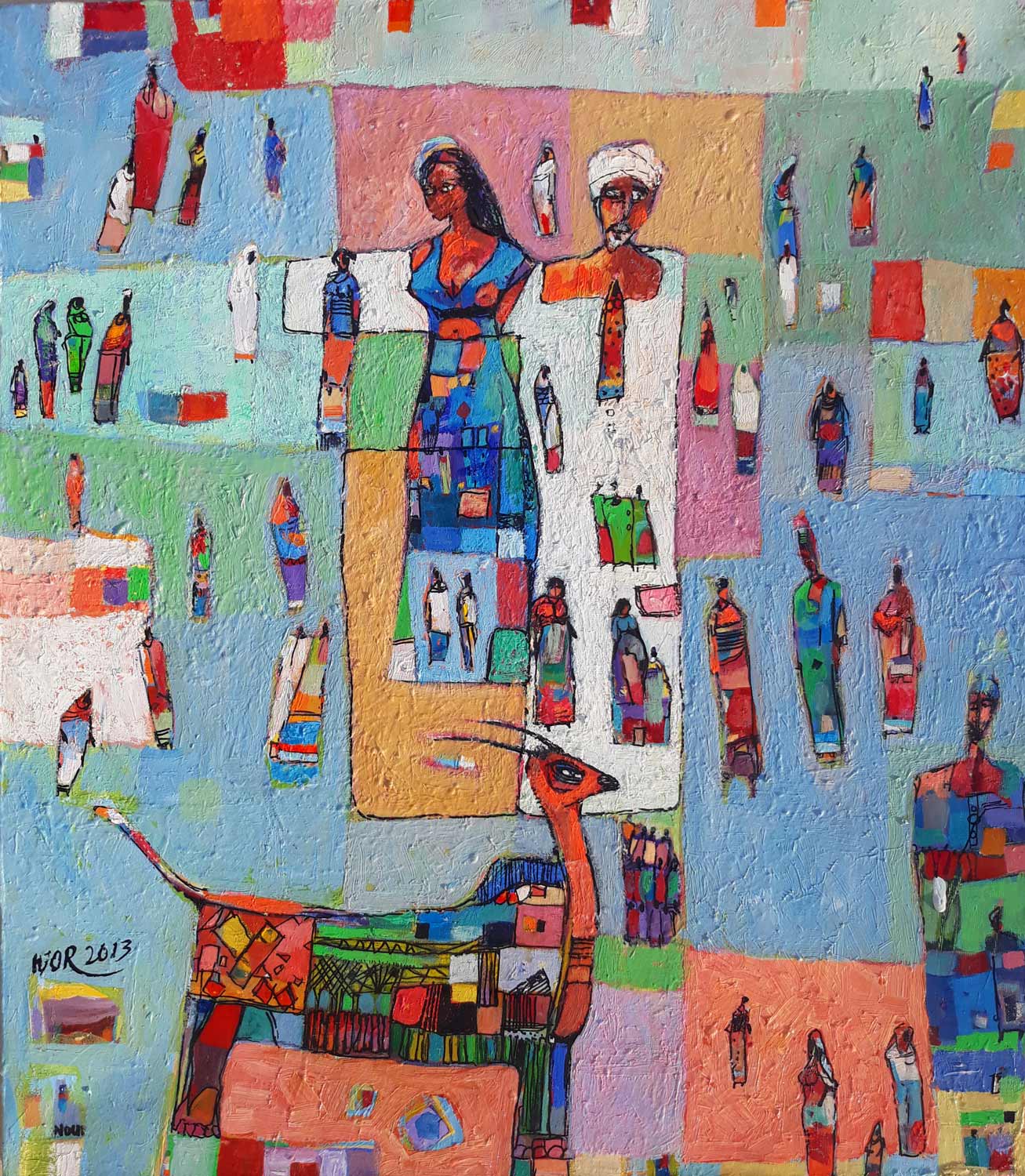




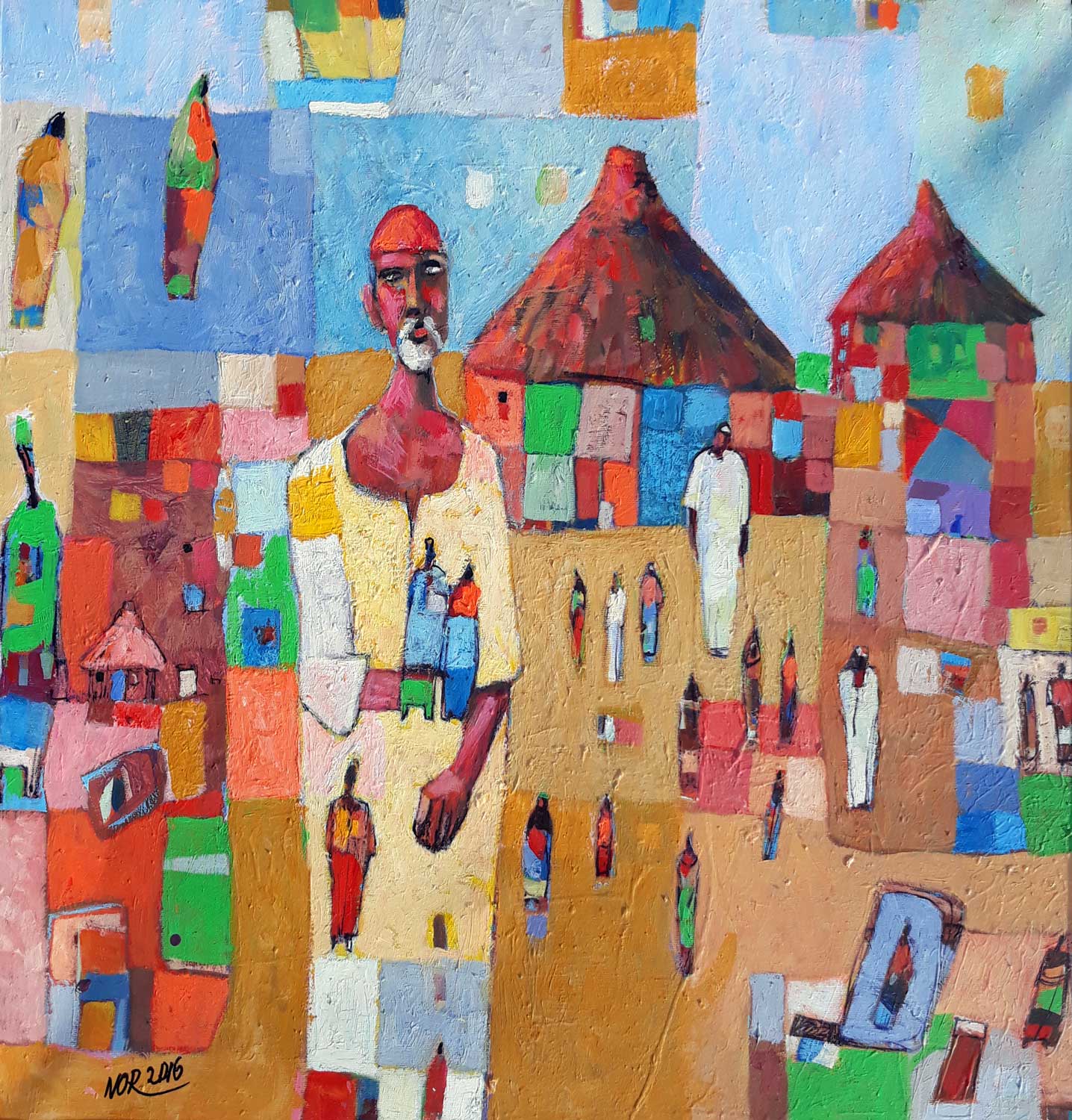

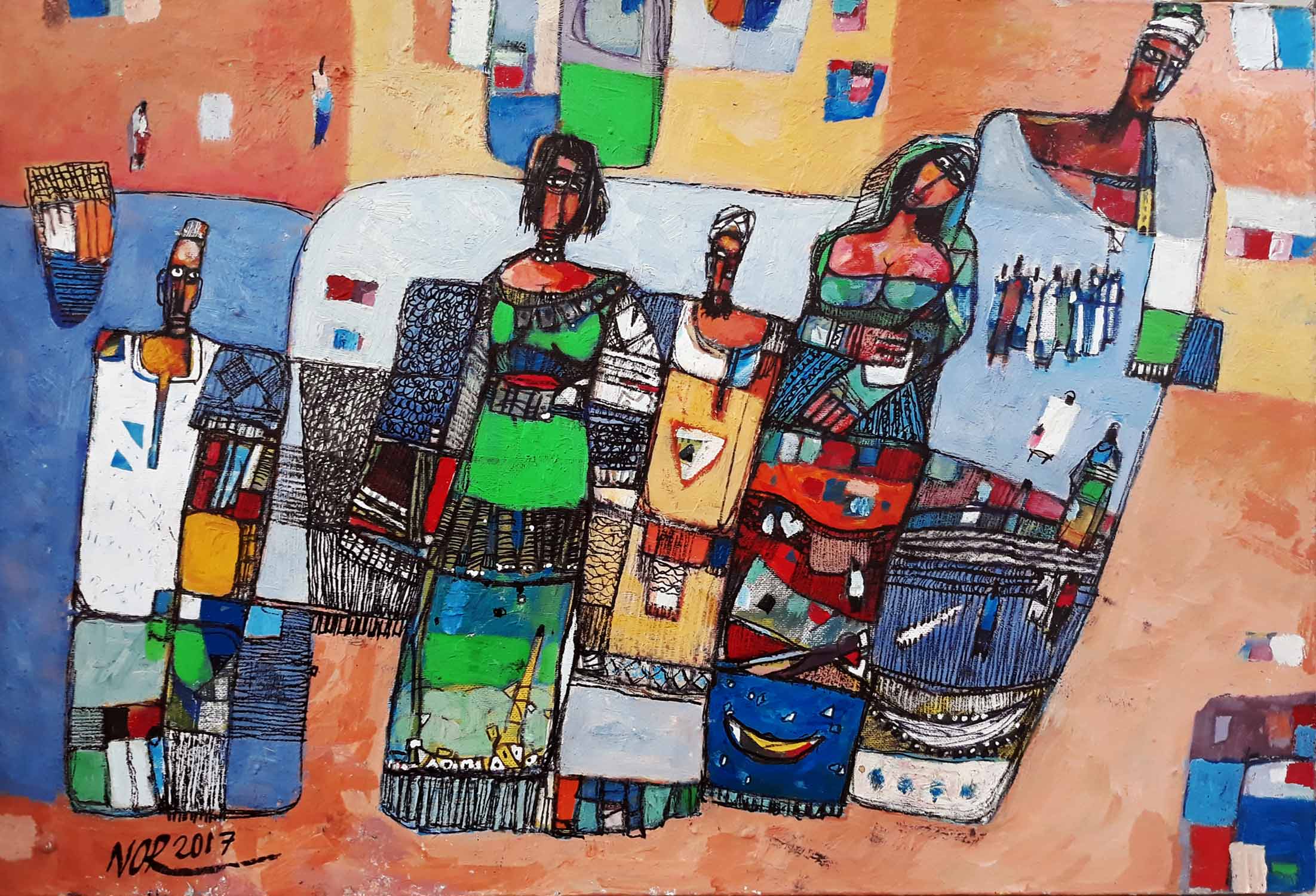




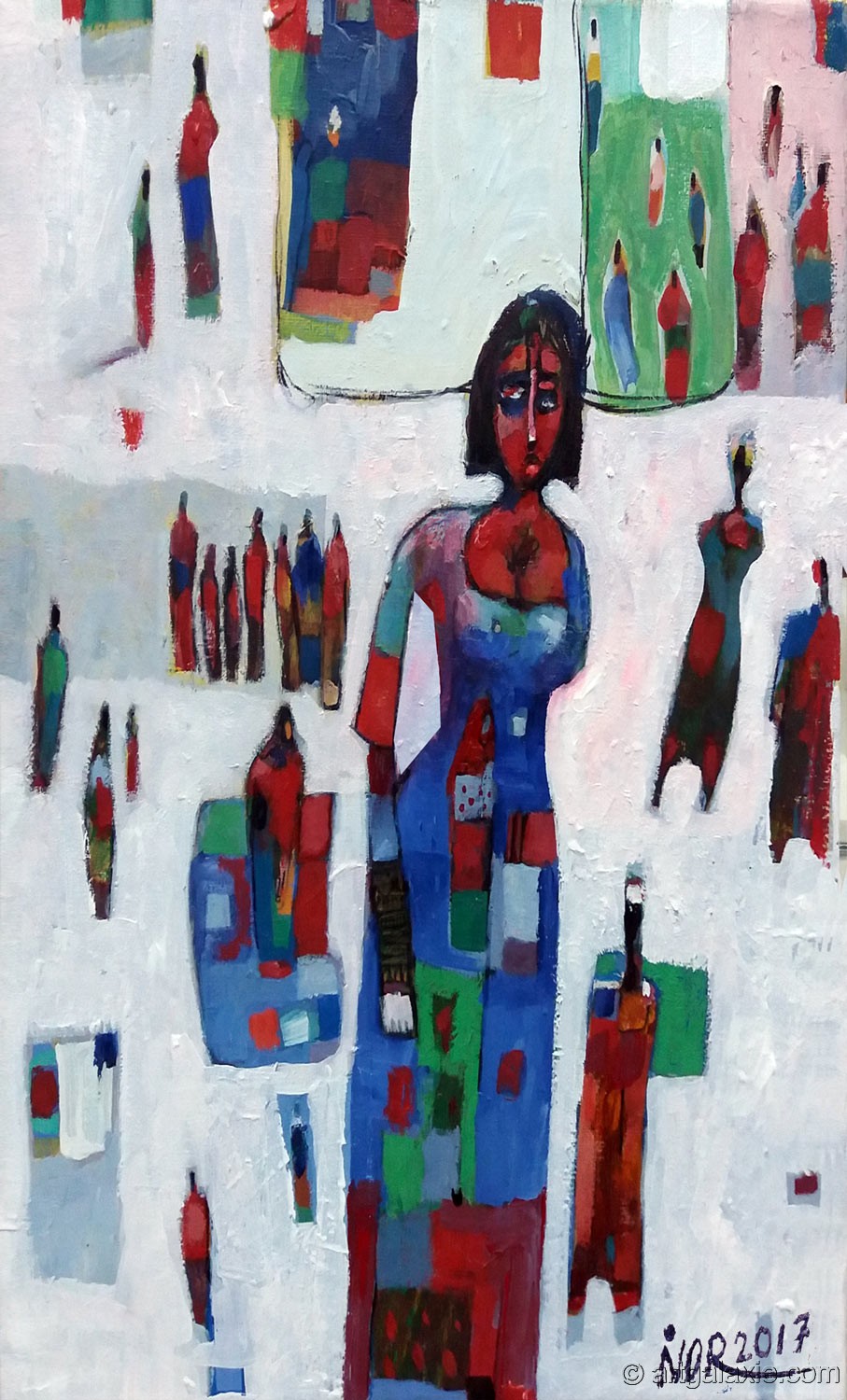


 Contact Artist
Contact Artist